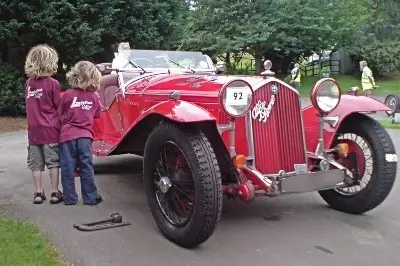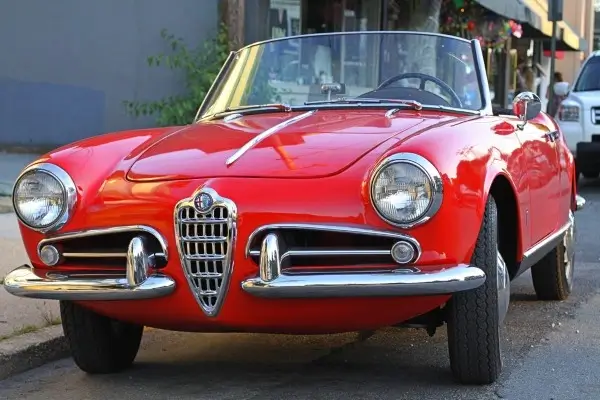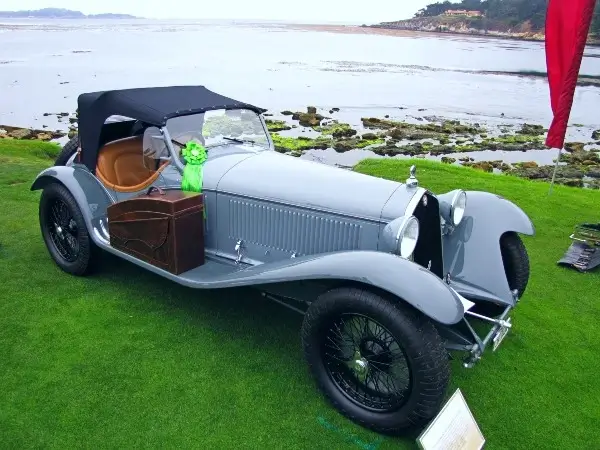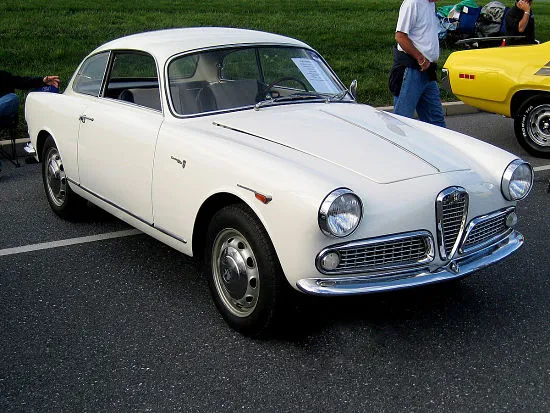-
- Alfa Romeo 6C
- Alfa Romeo 1900
- Alfa Romeo Giulietta Tyres
- Alfa Romeo Giulietta Spider Tyres
- Alfa Romeo Giulia Tyres
- Alfa Romeo Giulia Spider Tyres
- Alfa Romeo Sprint GT Tyres
- Alfa Romeo 2000 Tyres
- Alfa Romeo 2000-2600 Spider Tyres
- Alfa Romeo 2600 Tyres
- Alfa Romeo Tipo 33 Stradale Tyres
- Alfa Romeo 1750 Tyres
- Alfa Romeo Montreal Tyres
- Alfa Romeo Alfetta Tyres
- Alfa Romeo Alfetta GTV Tyres
- Alfa Romeo Alfasud Tyres
- Alfa Romeo 1300-1600 Junior Z Tyres
- Alfa Romeo Spider Tyres
- Alfa Romeo Spider Duetto Tyres
- Alfa Romeo Spider 1750 Veloce Tyres
- Alfa Romeo Spider 1750-2000 Tyres
- Alfa Romeo Spider S3-S4 Tyres
Alfa Romeo Tyres



Classic Alfa RomeoTyres
01302 711 123
or
Email: sales@longstonetyres.co.uk
Longstone Tyres can now supply the 165 HR 14 PIRELLI CINTURATO ™; CA67. The majority of Alfa Romeo cars fitted 165R14 tyres from 1969 right through to the early '80's. The handling of rear wheel drive sports cars, such as the Alfa Romeo, in this period are suited to progressive tyres, which is why Alfa fitted the 165 HR 14 PIRELLI CINTURATO ™; CA67.
Not including the Montreal, Alfa continue to fit the size 165R14 on their rear-wheel-drive cars right up until the 1977 Alfetta where they started to offer a 185/70R14. Cars such as the Spider 2000 were still fitting 165R14 tyres 10 years after the introduction of low profile tyres because that is the way these cars handled the best.
There is always a debate about fitting original equipment tyres. People are often tempted by cheaper tyres in modern sizes, they are cheaper now because they are mass-produced. The argument is whether modern sizes are better. Modern tyres compliment modern cars, but over tyre-ing, a classic car will affect its progressive handling.

Vintage Alfa Romeo Tyres
In these pages we make recommendations for tyre fitments for your classic Alfa Romeo. The recommendations we give are what we believe will make your Alfa Romeo handle as well as possible. Often Alfa Romeo's of this period are over tyred which will make the steering heavier which is not, we believe, why you would buy an Alfa Romeo.
Alfa Romeo Tyres
- 165 HR 14 PIRELLI CINTURATO CA67 for a Alfa Romeo 1750.
- 165 SR 400 Michelin X for a Alfa Romeo 1900.
- 165 SR 400 Michelin X for an Alfa Romeo 2000.
- 165 SR 400 Michelin X for a Alfa Romeo 2600.
- 165 HR 14 PIRELLI CINTURATO CA67 for a Alfa Romeo Alfetta.
- 155 HR 15 PIRELLI CINTURATO CA67 or post-1969 a 165 HR 14 PIRELLI CINTURATO CA67 for a Alfa Romeo Giulia.
- 155 HR 15 PIRELLI CINTURATO CA67 for a Alfa Romeo Giulietta.
- 205/70VR14 Michelin XWX for a Alfa Romeo Montreal.
- 165 HR 14 PIRELLI CINTURATO CA67 for a Alfa Romeo Spider.
- 155 HR 15 PIRELLI CINTURATO CA67 or post-1969 a 165 HR 14 PIRELLI CINTURATO CA67 for a Alfa Romeo Sprint GT.
Classic Alfa Tyre Review

The following words are an independed tyre review about 155HR15 Pirelli Cinturato on a Alfa Sprint GT Veloce
“For others considering a similar set up, I'm pleased to report excellent results after living with the Sprint GT Veloce for a few weeks following a suspension refresh and new tyres:
- Veloce Sport suspension rebuild kit from UK, similar in theory to Alfaholics stage 1, but with Koni reds and Eibach springs (1.5 inch drop and just slightly stiffer than stock).
- Pirelli Cinturato CA67 155HR15 on original 4.5 inch steel rims. I had ordered Michelin XAS but changed to Pirelli due to wait time.
- Original 1600 engine still stock.
Progressive handling and lively feel, exactly what I was hoping for. The tyres are actually more grippy than what I expected. The lovely ride quality on choppy roads is still there and has just the right amount of lean through the bends. Sits quite well without wandering at 100km/h on the highway. I wondered how the skinny 155 tyres would go with the slightly tweaked suspension but the combination definitely works for the street and through the twisties. I suspect it would be huge fun on a track if you weren't chasing outright lap times.
I played a lot with tyre pressures before settling on 28 PSI front and 26 PSI rear as being right for my set up, which is a front-rear switch of the original factory recommended pressures. The only downside I can detect with the 155 CA67 tyres is a slightly doughy turn-in when entering a corner with gusto (makes sense given the high sidewalls), but when loaded up in the corner the steering feel and adjustablity is superb. Fun and lively on exit, you can feel exactly what's going on when approaching the limit, rather than snap and let go.
Down the track I'll probably add another 20 horses or so to the engine and I'll be interested to see whether that starts to overwhelm the wheel and tyre set up. If that happens I'll consider 6x15 GTA wheels with Pirelli CN36 175/70 as the sensible middle ground.
Those who prefer an absolutely planted, solid, and completely steady feel of a modern set up might not like this more lively direction, but it's all down to personal preferences and one is not better than the other. For me, I'm happy to be back once again in an old Alfa after having lived with fast Germans for the last 10 years. I've been reminded that a slow car with huge character driven briskly is so much more fun than a modern, fast, highly predictable car going slow“.

Alpha Romeo History
Alfa Romeo Automobiles is an Italian luxury automobile manufacturer, the firm was established on June 24, 1910, in Milan, Italy. The word "Alfa" is an abbreviation for its initial name, "Anonima Lombarda Fabbrica Automobili." "Anonima" means "anonymous" because it was established by anonymous investors. During the early setup phase, the firm purchased the Portello industrial building of Darracq in Milan, which was closing and selling all of its assets. The Alfa Romeo moniker wasn't born until 1920, five years after the firm was taken over by entrepreneur Nicola Romeo, it was first seen on the Torpedo 20-30 HP open-topped tourer.

Vittorio Jano was persuaded away from Fiat to succeed Merosi as chief designer at Alfa Romeo in 1923, thanks in part to the influence of a young Alfa racing driver called Enzo Ferrari. Jano's first Alfa Romeo was the P2 Grand Prix racer, which won Alfa Romeo the first Grand Prix world championship in 1925. Jano developed a series of 4, 6, and 8-cylinder inline engines for road cars, based on the P2 unit that established the company's engine architecture. It featured a light alloy fabrication, a hemispherical combustion system, plugs located centrally, two rows of overhead valves per cylinder bank, and dual overhead cams. Jano's designs were both dependable and fast.
Nicola Romeo left in 1928, and Alfa Romeo was saved by the government in 1933 when it had effective control. Alfa Romeo became a national symbol and a tool of Mussolini's Italy. During this time, it produced customised automobiles for the rich, with bodywork often designed by Carrozzeria Touring or Pininfarina. The Alfa Romeo 2900B Type 35 races were the pinnacle of this period.
The Alfa plant was devastated during WWII and struggled to return to business afterwards. High-end autos had been removed. With the launch of the Giulietta series of berline (saloons/sedans), coupes, and open two-seaters for the 1954 model year, smaller, mass-produced cars began to be built. All three models shared the Alfa Romeo overhead Twin Cam four-cylinder engine, which dispensed 1300 cc at the time. This engine was ultimately expanded to 2000 cc and remained in production until 1995.

During the 1960s, Alfa Romeo focused on motorsports with production-based vehicles such as the GTA (Gran Turismo Allegerita), an aluminium-bodied version of the Bertone-designed coupe with a strong twin-plug engine. Alfa Romeo was in financial problems again by the 1970s, with the business operating at just roughly 60% capacity in 1980. Because Alfa Romeo was run by the Italian government-owned Istituto per la Ricostruzione Industriale (IRI), an agreement was reached in which a quarter of worker salaries were reimbursed through state unemployment agencies in exchange for Alfa's plants being idle for two weeks every two months. Alfa Romeo was solidly in the red due to its old product range and relatively low productivity, as well as near-permanent worker unrest and Italy's high inflation rates.
By 1986, IRI was incurring huge losses — Alfa Romeo had not been profitable for the previous 13 years and IRI president Romano Prodi decided to sell Alfa Romeo. Alfa Romeo has been owned by Finmeccanica, IRI's mechanical holdings arm, since 1932. Prodi approached fellow Italian manufacturer Fiat initially, who offered to form a joint venture with Alfa.
Fiat elected to bid for the entirety of Alfa Romeo and give employment guarantees to Italian workers, an offer that Ford refused to match. Alfa Romeo's then-President Ettore Massacesi claimed in 1981 that the company would never employ Fiat engines — the engines being a big part of Alfa Romeo's character, but would be pleased to collaborate completely with everything else. beginning in the 1990s Alfa's traditional attributes of avant-garde style and sports panache were paired with the economic benefits of product rationalisation afforded by Fiat. Alfa Romeo celebrated its 100th anniversary on June 24, 2010.
